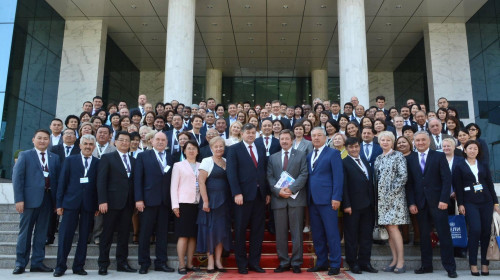Productivity is one of the major determinants of the standard of living, since increases in productivity may result in higher real income and promote price stability. The measurement of productivity is an important element in the evaluation of the relative efficiency of factor utilization domestically and internationally. The analysis of trends in productivity, especially labor productivity, is a factor in the successful examination of occupational mobility, the projection of future employment opportunities, and the determination of future workforce and training policies.
The seminar includes discussions on the following topics:
Definitions and concepts
- Output, inputs, prices and costs, index theory, and aggregation methods
Methodology for calculating output per hour and total factor productivity measures
- Output measurement including deflated value and physical quantity measures, input measurement, aggregation of heterogeneous outputs and inputs, index construction, and index linking
Sources of data
- Various government and private sources (including discussion of poor or fragmentary data) for derivation of: output measures, input measures (including labor, capital, and intermediate purchases), and weights
Trend analysis
- Changes in productivity, factor input shifts, and historical analysis
Data used to construct productivity measures are also used to report on the following SDG indicators:
- Indicator 8.2.1: Annual growth rate of real GDP per employed person
- Indicator 9.2.2: Manufacturing employment as a proportion of total employment
Target Audience
This seminar is designed for economists, statisticians, researchers, analysts, and other professionals engaged in productivity measurement in national statistical programs. Participants should have an elementary knowledge of statistics and some experience in analyzing labor or economic data.
Learning Objectives
To strengthen capabilities for the development and analysis of statistics on productivity by:
- Presenting techniques for the compilation and application of productivity measurements for individual industries, major sectors, and the total economy
- Demonstrating the value of output per hour measurements in deriving unit labor cost data for the analysis of the wage-price relationship by industry, major sector, and for the total economy; in economic growth projections; in labor mobility trends; and in workforce training
- Demonstrating the value of total factor productivity as an indicator of economic progress; an explanation of the growth of output per hour; and a way to relate and analyze the movements of the price of output and the prices of labor as well as other inputs
- Discussing concerns of government, business, and labor organizations regarding productivity
For additional information about this and other BLS international training programs, please visit the BLS Division of International Technical Cooperation (ITC) website or contact ITC staff at ITCinfo@bls.gov.







